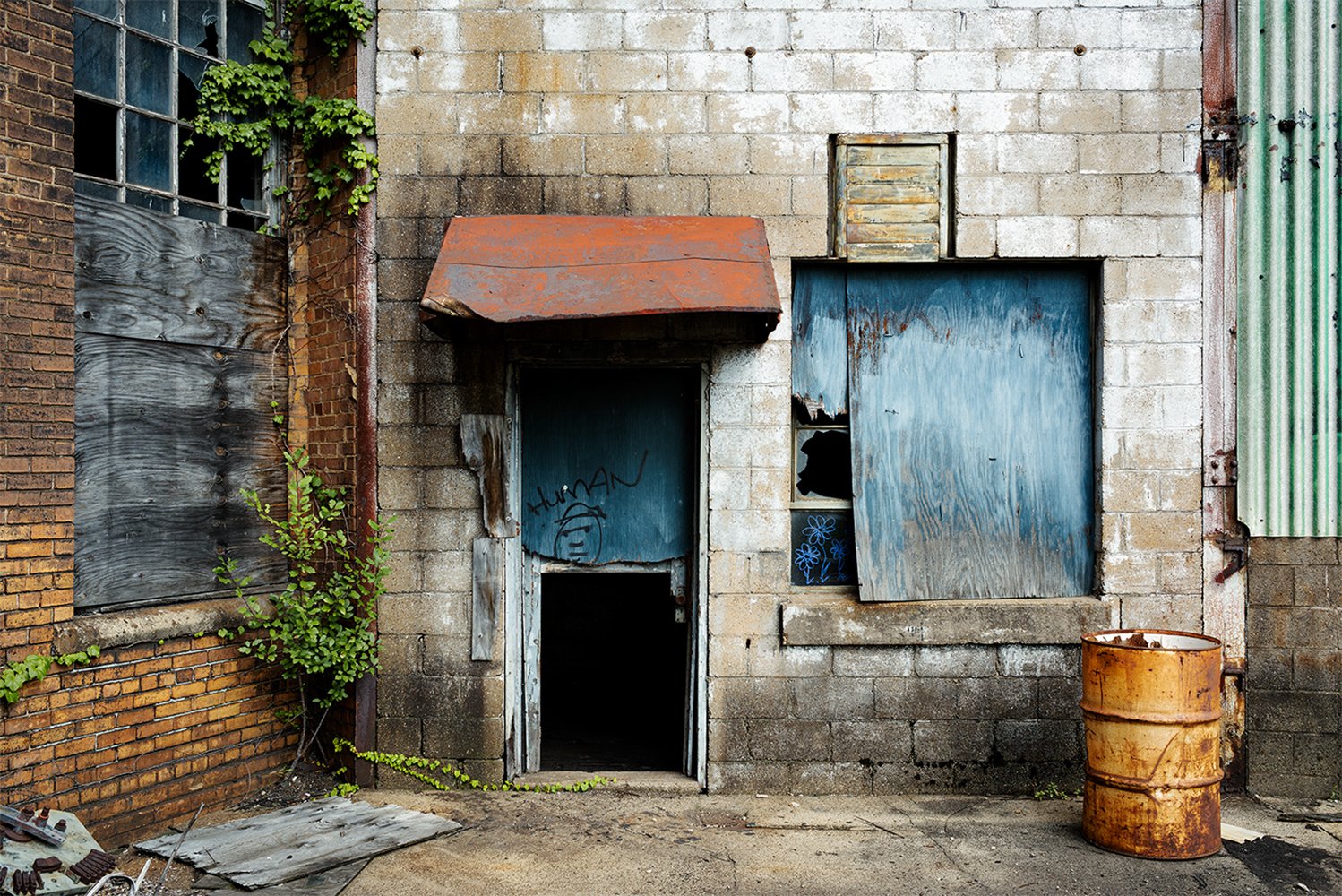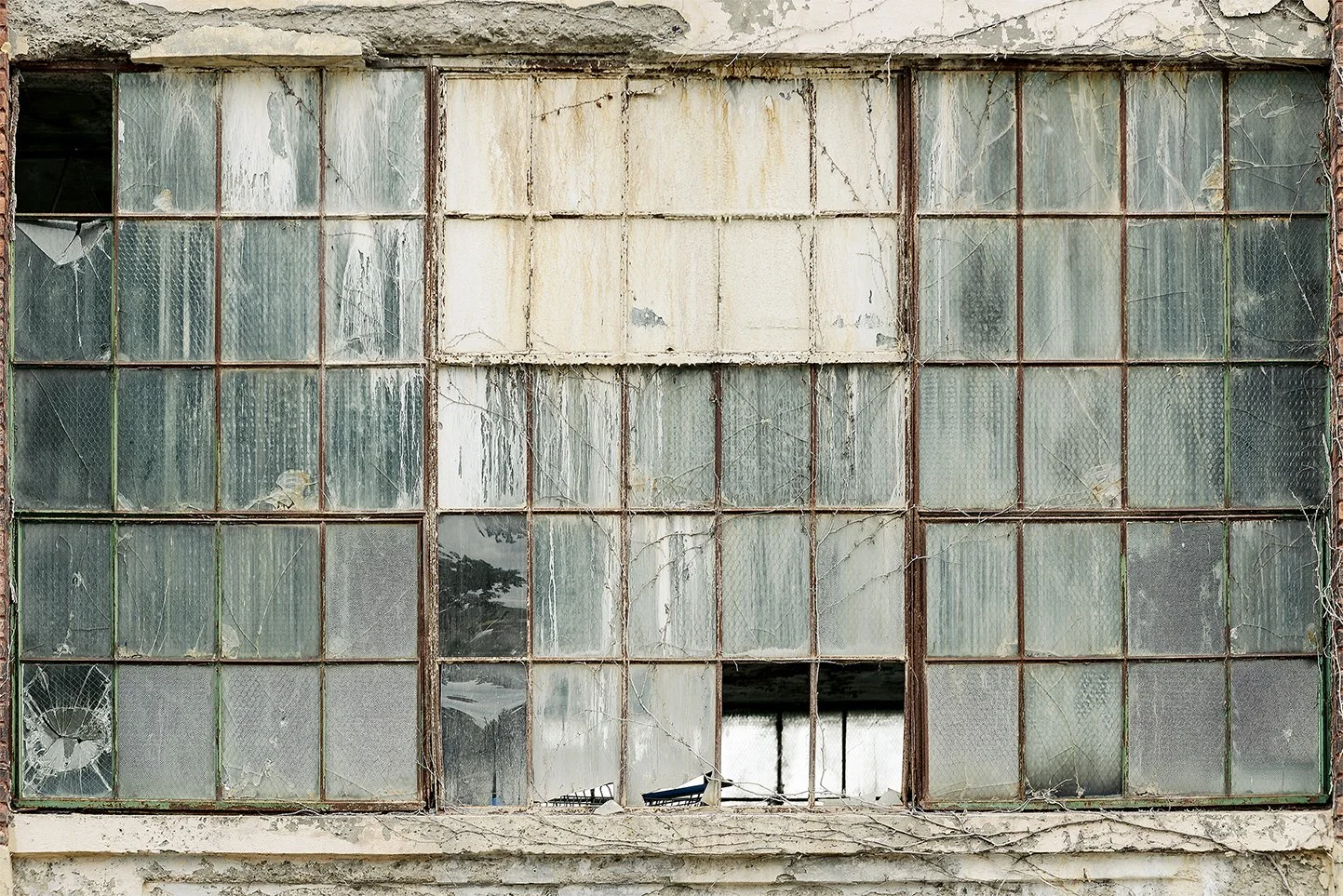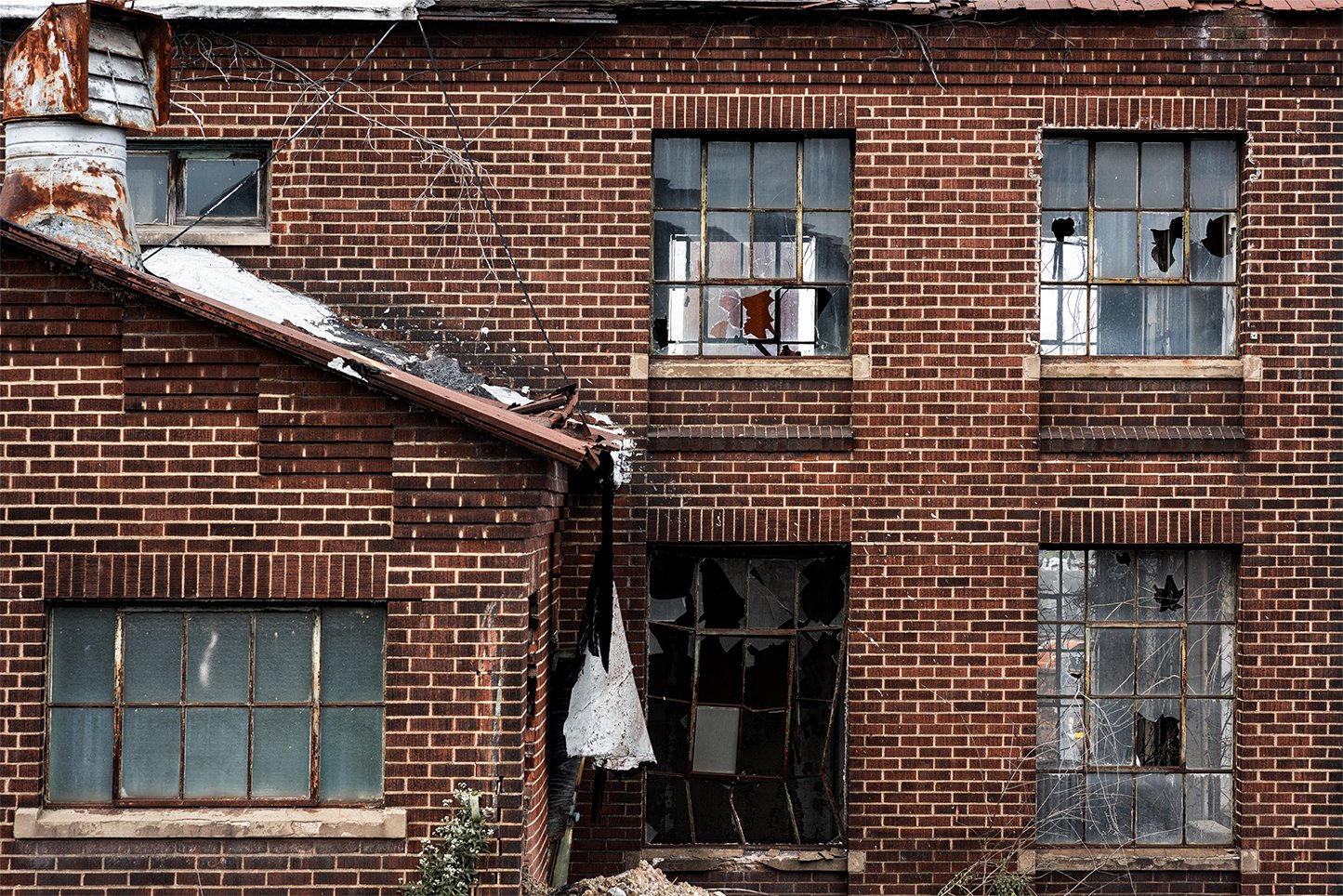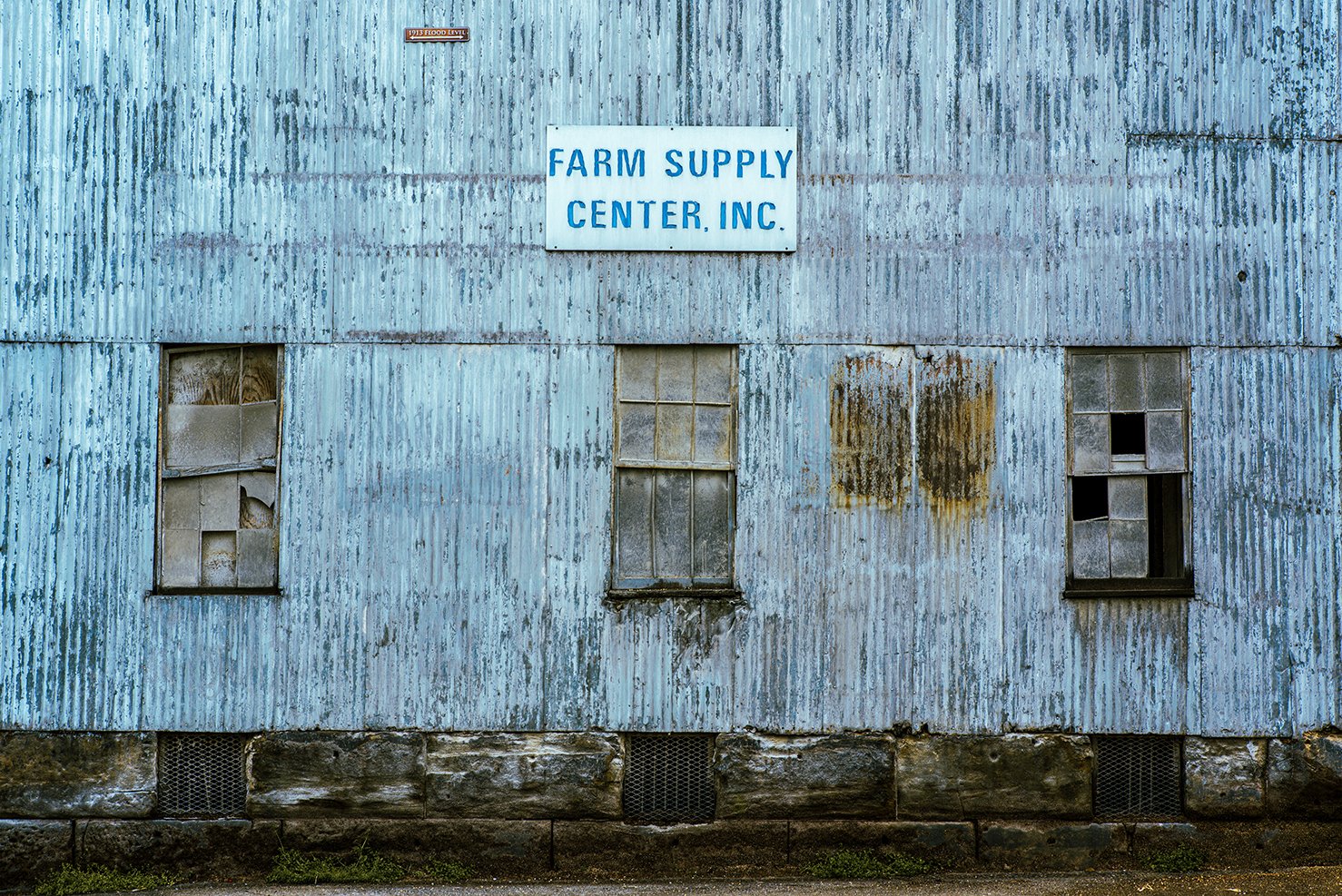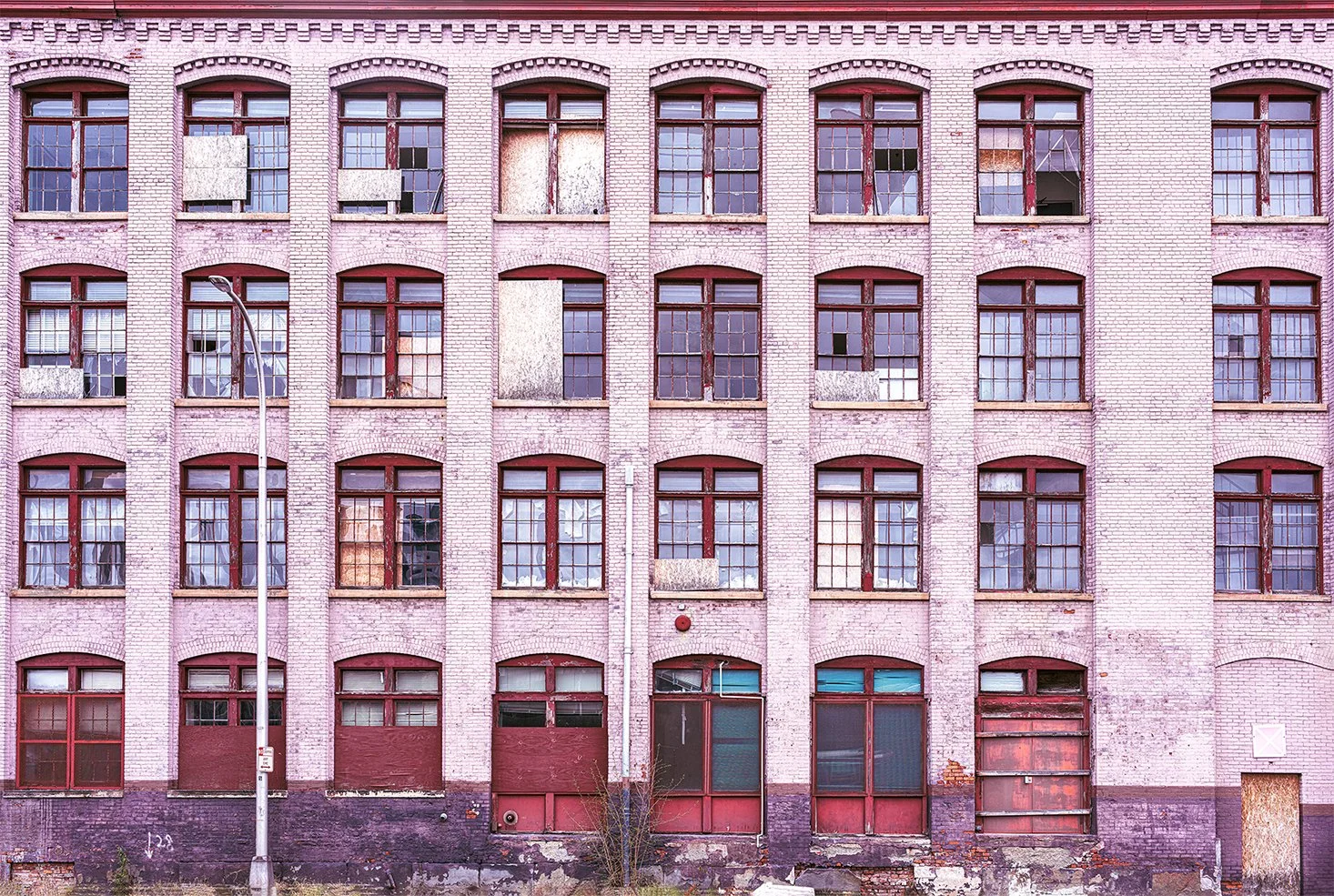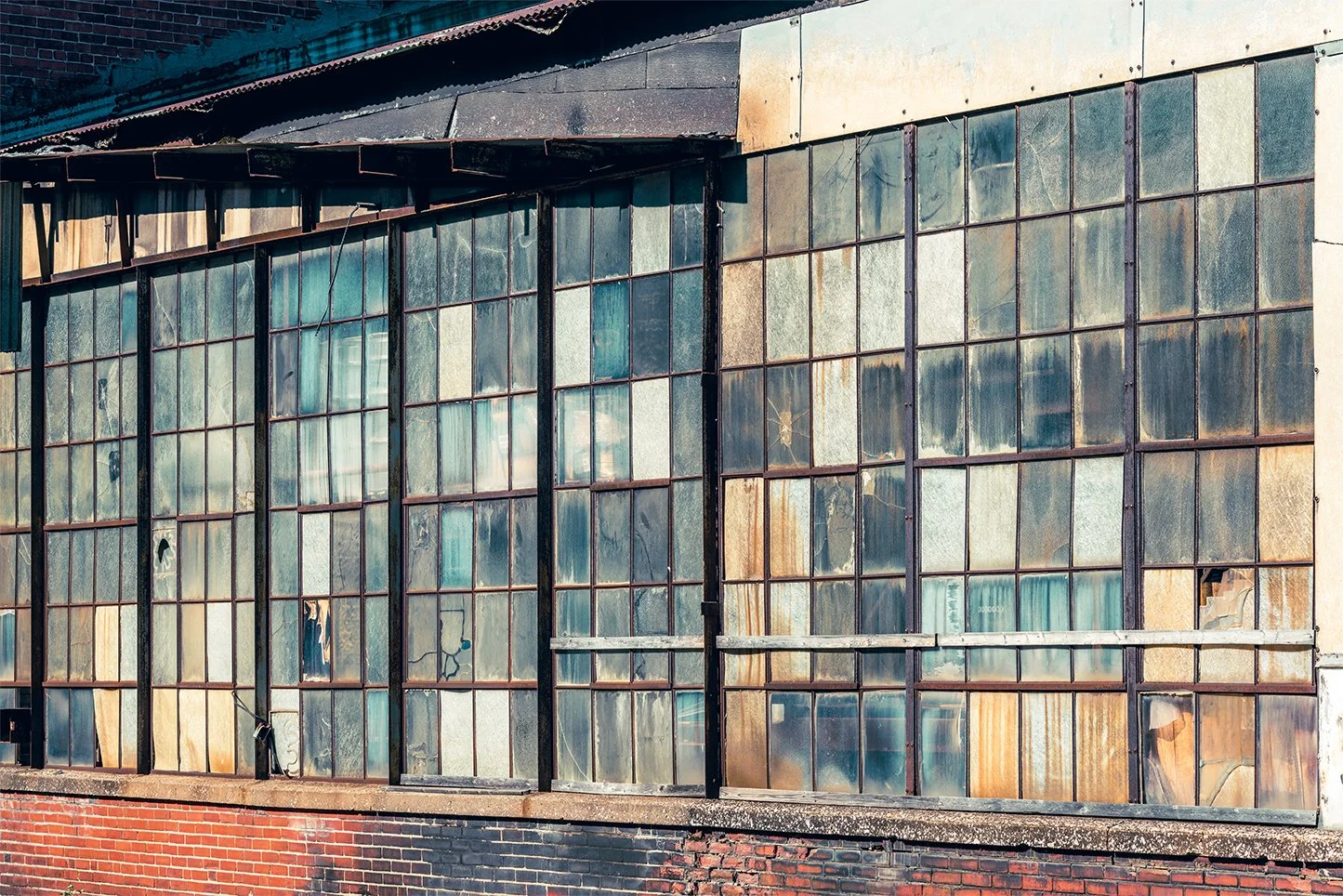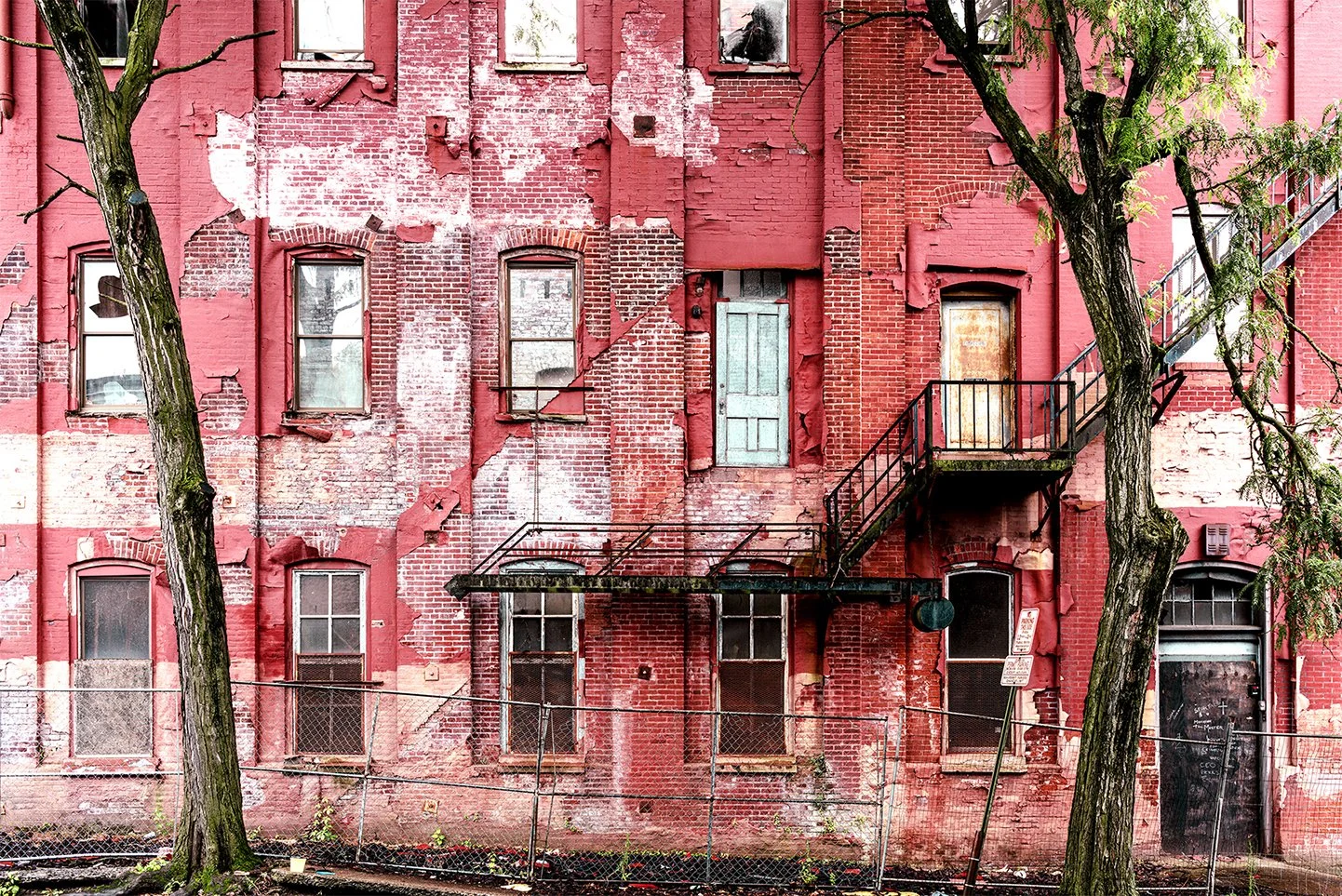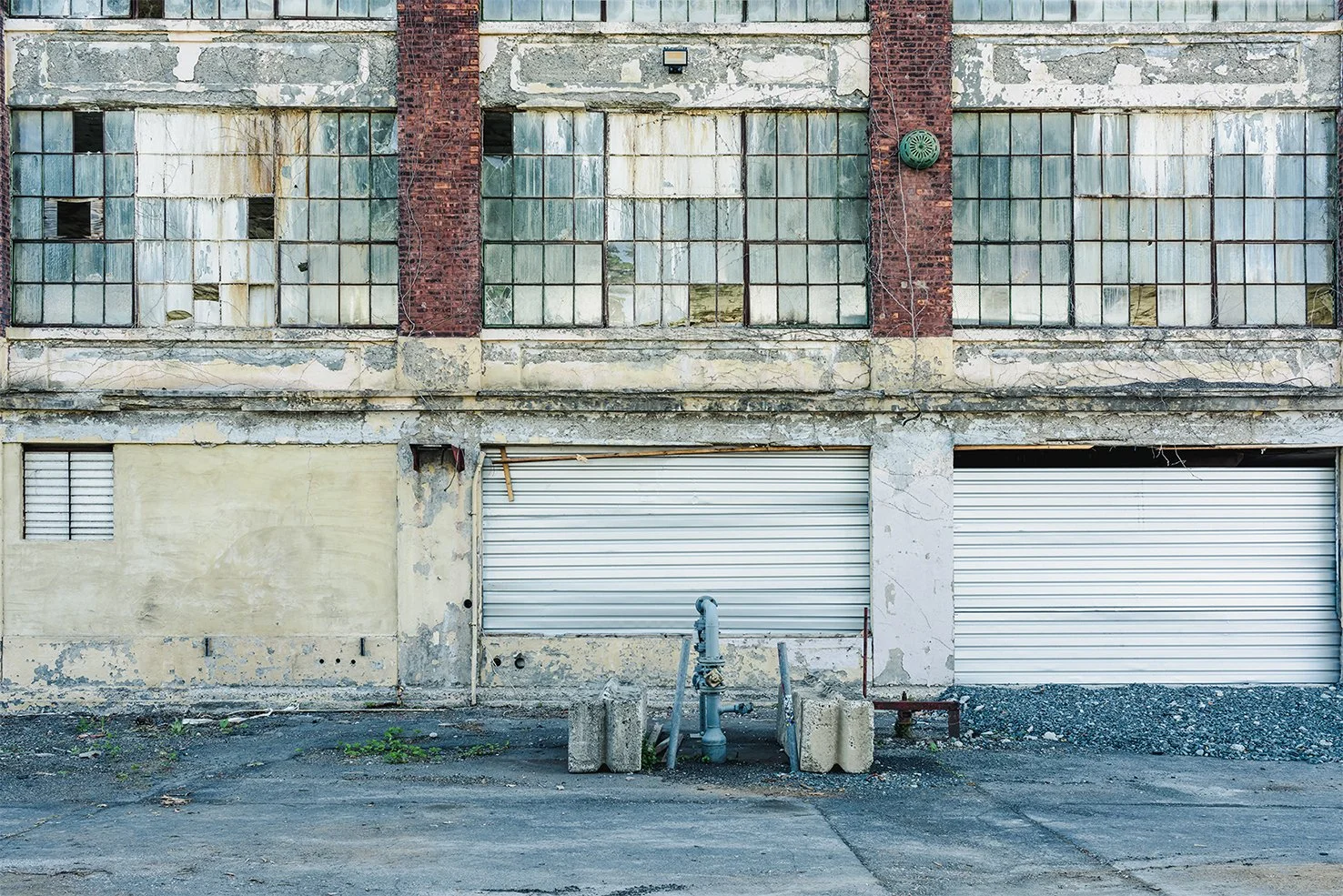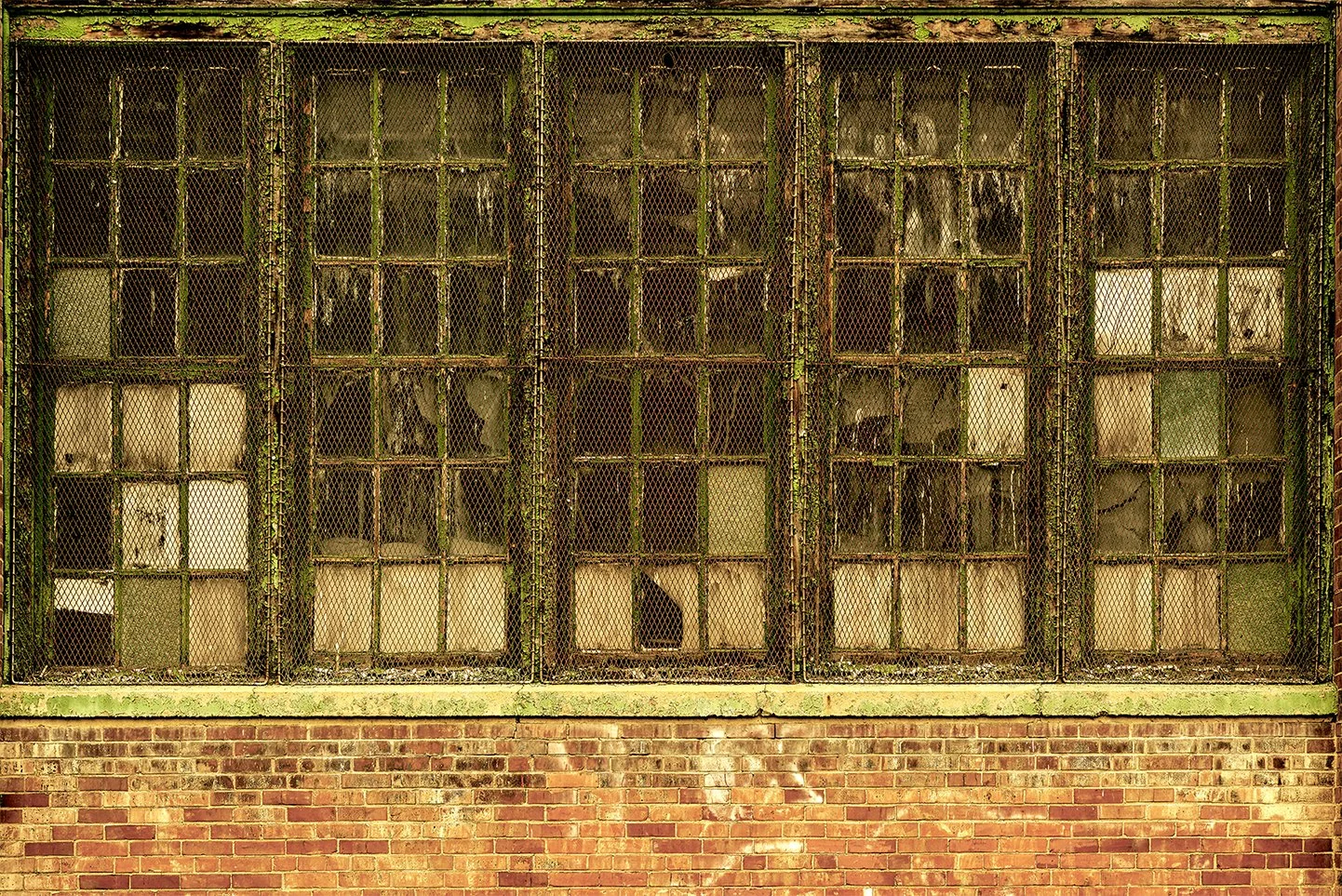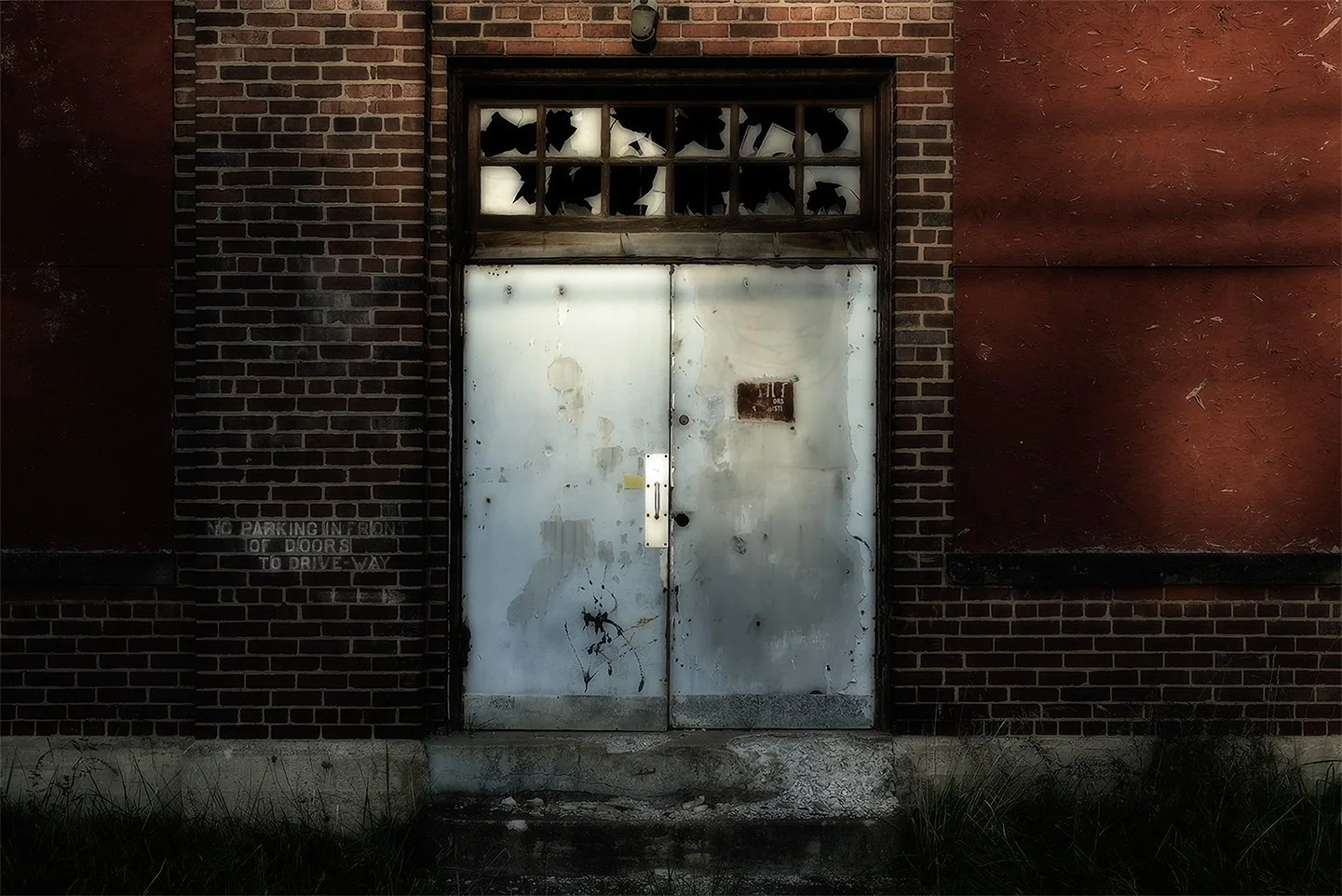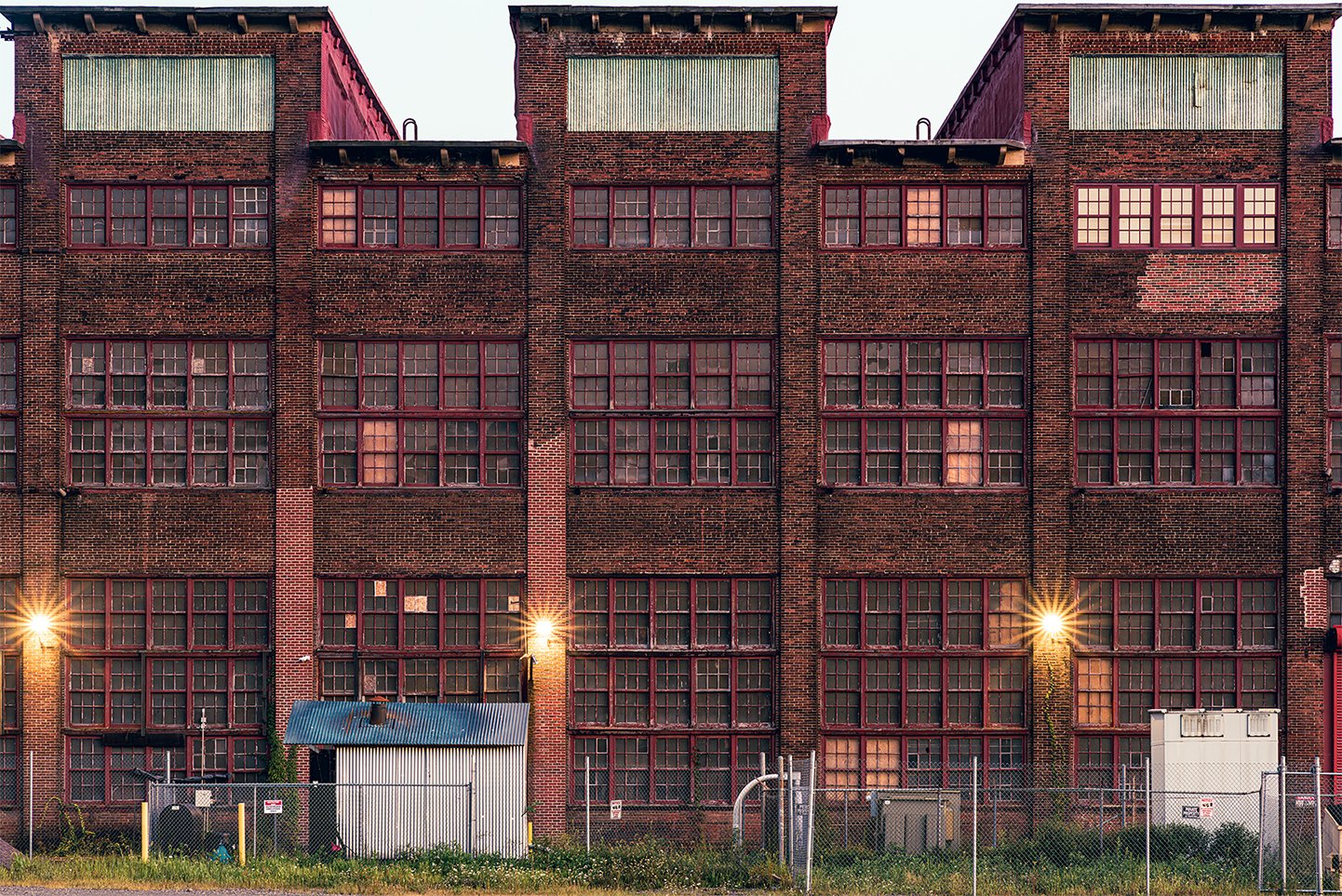
factory windows are Always broken
Nicholas Vachel Lindsay (1879-1931)
Factory windows are always broken.
Somebody's always throwing bricks,
Somebody's always heaving cinders,
Playing ugly Yahoo tricks.
Factory windows are always broken.
Other windows are let alone.
No one throws through the chapel-window
The bitter, snarling, derisive stone.
Factory windows are always broken.
Something or other is going wrong.
Something is rotten—I think, in Denmark.
End of factory-window song
THE CONGO AND OTHER POEMS
Macmillan Company, New York, 1914, pp.105
requiem for america
A visual ballad
Requiem for America is a photographic tribute to America's Industrial Legacy, A stunning portfolio that offers a visually arresting and emotionally resonant exploration of a pivotal era in American history. Focused on the Rustbelt and Textile regions, this meticulously curated collection provides a heartfelt look into a time marked by towering factories, bustling steel mills, the rhythm of textile production, and the beloved Mom-and-Pop stores that served as the heartbeat of countless communities.
"Requiem for America" dives into the iconic past of Bethlehem Steel and other landmark industries, celebrating their significant impact on the nation's economic and cultural landscape. Through evocative imagery, the book honors the emigrants families—our unsung heroes and heroines—whose resilience and dedication were instrumental in shaping an age of modern America.
Each act of this portfolio captures the grandeur and human stories behind the factories and mills, reflecting the rich and shared heritage of this transformative period. From historic textile mills to where steel is king to enduring mom-and-pop stores, Requiem for America conveys the essence of an era where community and industry were intricately woven together to create a unique and vibrant legacy.
“In 1977 the glow of the furnaces had already begun to dim. The 50,000 steel jobs in the valley from post WWII had shrunk to 30,000. Steel Companies were being merged, the local mills were antiquated compared to the new modern facilities overseas, which were taking an ever-increasing share of the international market. But, instead of limiting imports our government made it even more costly for American companies to compete by imposing stricter air and water pollution standards.”
ACT I
BROKEN WINDOWS
This storyline centers on the heartbreaking phenomenon of manufacturers abandoning their factories and mills, leaving behind structures that once thrived with life and productivity. As these industrial sites fall into decay, the echoes of machinery and the industrious hum of workers fade into silence. The once-bustling communities that relied on these businesses for their livelihoods face economic decline and social fragmentation, as families struggle to adapt to the loss of jobs and the decline of local infrastructure. Places that once thrived with activity — parks, shops, and gathering places—are now empty or in disrepair. Neighborhoods that were once vibrant and interconnected have become isolated, residents are forced to leave in search of work. Amid this turmoil, the decline of local businesses leads to a loss of identity and erodes the very fabric of community life.

Act I No.01, Bethlehem Steel Johnstown Works, Johnstown, Pennsylvania

Act I No.02, Human, McKeesport, Pennsylvania

Act I No.03, Albany, New York

Act I No.04, Receiving, Jamestown, New York

Act I No.05, Anon, Albany, New YorK

Act I No.06, Railroad Hub, Ambridge, Pennsylvania

Act I No.07, Empire, ?????, Pennsylvania

Act I No.08, Farm Supply, Steubenville, Ohio

Act I No.09, Pink Greyhound, Albany, New York

Act I No.10, McKeesport, Pennsylvania

Act I No.11, Ruth, Reading, Pennsylvania

Act I No.12, Ambridge, Pennsylvania

Act I No.13, Meats & Provisions, ?????, Pennsylvania

Act I No.14, Trafficking, Reading, Pennsylvania

Act I No.15, Reading,Pennsylvania

Act I No.16, Shop, Johnstown, Pennsylvania

Act I N0.1 7, Olson Technologies, Allentown, Pennsylvania

Act I No.18, Hornet’s Nest, McKeesport, Pennsylvania

Act I No.19, Machine Shop, Reading, Pennsylvania

Act I No.20, Jamestown, New York

Act I No.21, Silk Mill, Wilkes Barre, Pennsylvania

Act I No.22, Erie, Pennsylvania

Act I No.23, Tube City, McKeesport, Pennsylvania

Act I No.24, Danger Elevator, Steubenville, Ohio

Act I No.25, Bethlehem Steel, Bethlehem, Pennsylvania

Act I No.26, Pewtarex, York, Pennsylvania

Act I No.27, Erie, Pennsylvania

Act I No.28, Collins Millwork, Troy, New York

Act I No.29, Reading, Pennsylvania

Act I No.30, Albany, New York

Act I No.31, Wildfire, York, Pennsylvania

Act I No.32, York, Pennsylvania

Act I No.33, Got Drenched, Johnstown, Pennsylvania

Act I No.34, ?????, Pennsylvania

Act I No.35, Jamestown, New York

Act I No.36, Reading Railroad, Reading, Pennsylvania
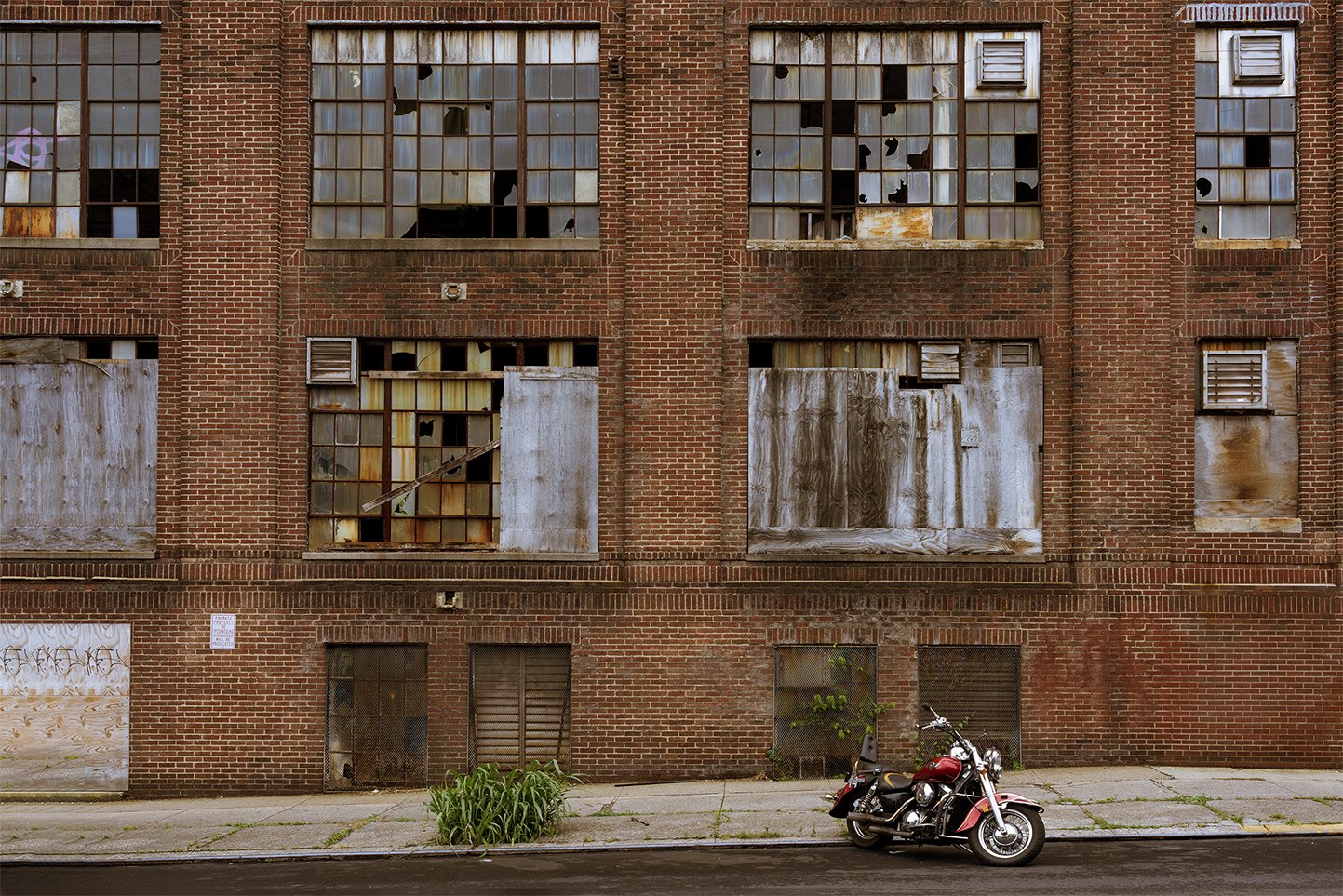
Act I No.37, Reading, Pennsylvania

Act I No.38, Norfolk Southern, ?????, Pennsylvania

Act I No.39, Haunting, Jamestown, New York

Act I No.40, Ghost of Mr. Murr, Jamestown, New York
ARTIST STATEMENT
prologue
This storyline centers on the heartbreaking phenomenon of manufacturers abandoning their factories and mills, leaving behind structures that once thrived with life and productivity. As these industrial sites fall into decay, the echoes of machinery and the industrious hum of workers fade into silence. The once-bustling communities that relied on these businesses for their livelihoods face economic decline and social fragmentation, as families struggle to adapt to the loss of jobs and the decline of local infrastructure. Places that once thrived with activity — parks, shops, and gathering places—are now empty or in disrepair. Neighborhoods that were once vibrant and interconnected have become isolated, residents are forced to leave in search of work. Amid this turmoil, the decline of local businesses leads to a loss of identity and erodes the very fabric of community life.
PIGMENT PRINTS
Details
Composed of one hundred-sixty-four pigment ink photographs, This visual ballad is presented across four acts of forty images, arranged in ten four-line stanzas following a ABCB rymithic pictorial theme. One photograph from each act was selected as a representative, serving as the hook or key visual introduction to that act.
This collection includes 24 x 36 inch archival pigment prints on Hahnemühle Baryta paper, available in a Limited Edition each priced at $1,250.00. All prints are signed, numbered, and dated by the artist on print verso. Additionally, custom-sized one-off prints, both larger and smaller, are available, as well as an Artist Four Print Edition. Please inquire for more details..
Prints are released in an edition of 5, plus one A/P master print held by the artist. (AP + Ed. 1/5 )

